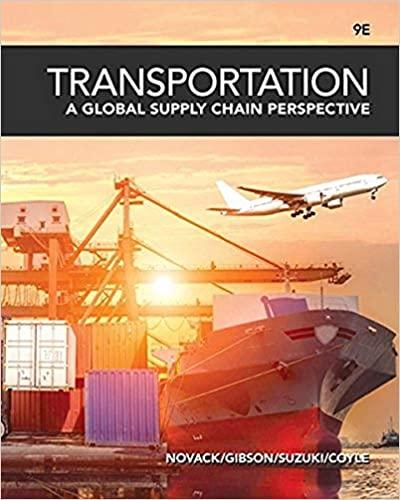The Federal Highway Trust Fund (HTF) was designed and passed by Congress to set tax rates per
Question:
The Federal Highway Trust Fund (HTF) was designed and passed by Congress to set tax rates per gallon of gasoline and diesel consumed by vehicles using the federal interstate system. The HTF is then used to maintain the thousands of miles of interstate highway in the United States.
This program has worked successfully up until the last several years when stricter EPA rules on fuel consumption have been implemented along with the introduction of hybrid and electric vehicles. Total miles driven and fuel consumed have decreased and, as such, have resulted in a decrease in taxes coming into the fund. The federal per-gallon tax rates of 18.4 cents for gasoline and 24.4 cents for diesel fuel have not changed since 1993. As a result, HTF is spending more money annually than it is taking in and faces a funding gap of $107 billion, according to the Congressional Budget Office. Critics complain that lawmakers have failed to provide an adequate, sustainable funding source.
With the U.S. interstate highway system in need of major repairs, the Trump administration is proposing a $1 trillion investment in improving the quality of the nation’s roads and highways. However, what is not yet agreed upon is where the additional funding will come from. Three main ideas have surfaced to generate these funds:
(1) The Trump administration is proposing a public–private partnership plan in which $200 million of federal spending will spur $800 million in private investment by companies that will operate the roads and collect road tolls.
(2) A gradual increase in the per-gallon fuel taxes over several years;
(3) Converting major portions of the interstate system into toll roads. There has been much debate about these approaches and many interest groups have voiced their opinions. As of yet, no decision has been made about this intended infrastructure investment program, funding level, or its sources of fees.
QUESTIONS
1. Which of the three funding approaches make the best economic sense? Which one makes the best political sense?
2. What are the pros and cons of each funding approach? Be sure to include in your discussion the views of personal vehicles versus commercial vehicles.
3. Is there another funding alternative not yet introduced? What would it be and how would it be implemented?
Step by Step Answer:

Transportation A Global Supply Chain Perspective
ISBN: 9781337406642
9th Edition
Authors: Robert A. Novack, Brian Gibson, Yoshinori Suzuki, John J. Coyle





